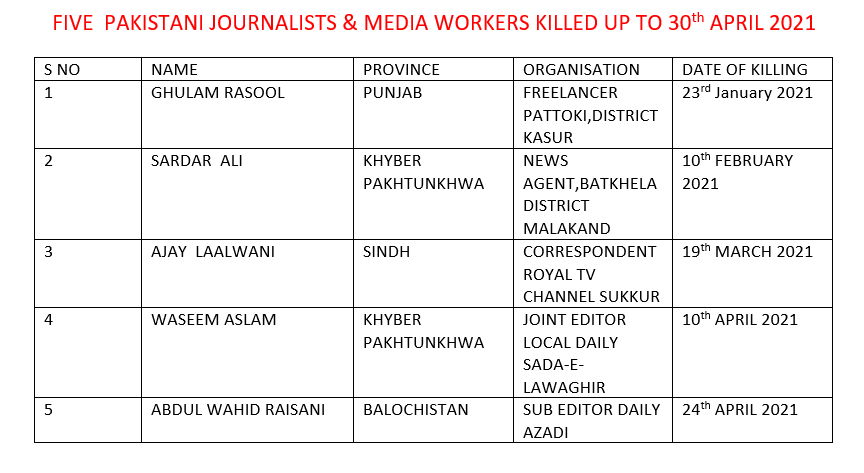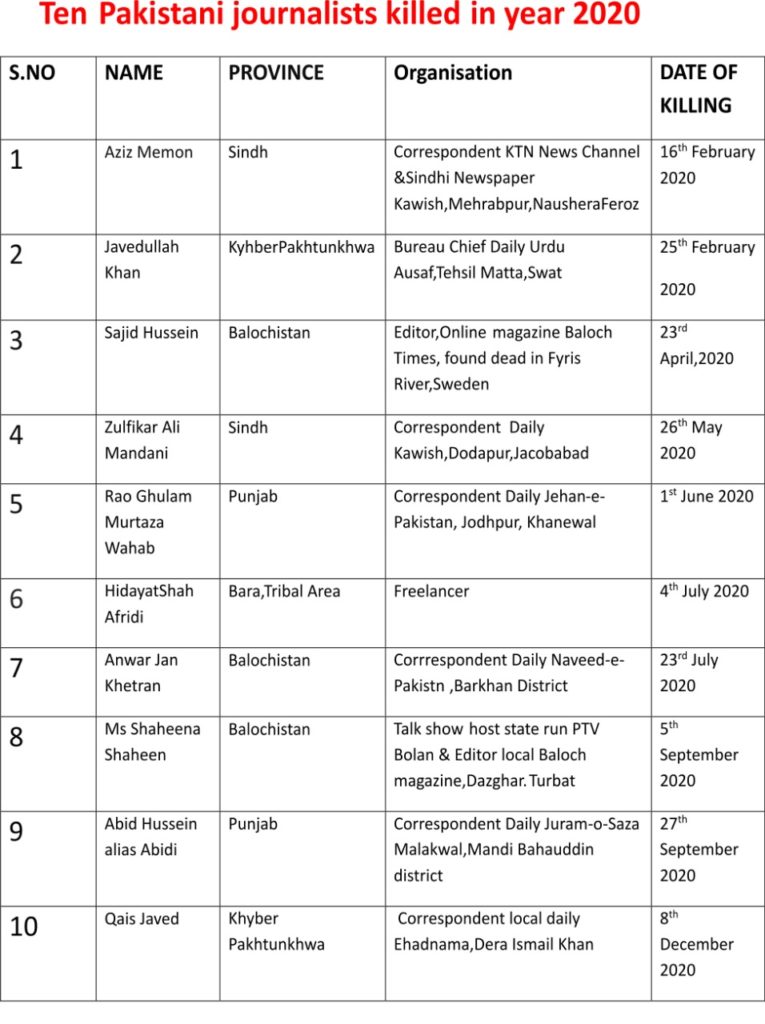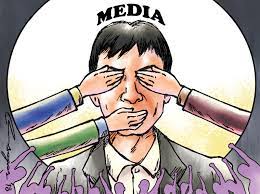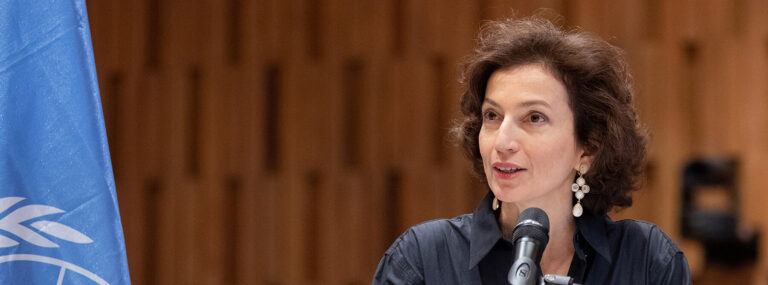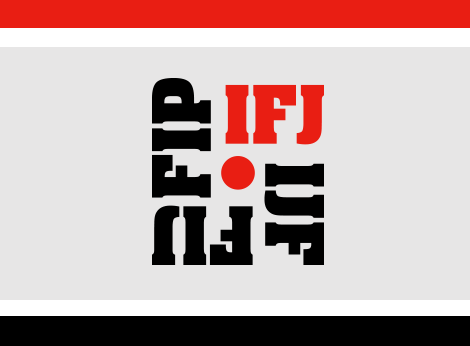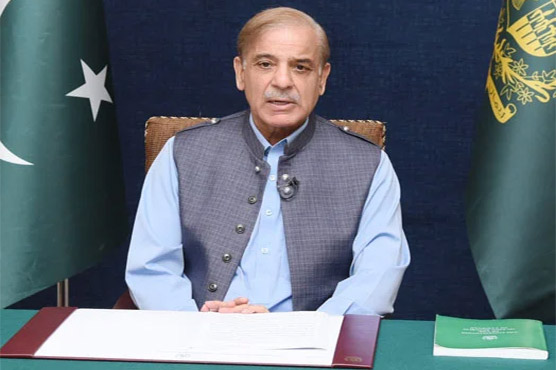Press freedoms chained in Pakistan, says RMNP Annual Press Freedom Report 2020-2021
Fifteen journalists including a female contributor have been killed in Pakistan from January 2020 to 30th April 2021 out of which 14 journalists hail from small towns and rural areas while only one journalist belongs to Quetta, the capital of Balochistan province. This was disclosed in the Annual Press Freedom Report 2020-2021 issued by the Rural Media Network Pakistan (RMNP) on the eve of the World Press Freedom Day, 3rd May 2021 in country’s Urdu language. According to the RMNP report, Pakistan is still one of the most dangerous countries for practicing journalism and since 2000, majority of the journalists who killed in the line of duty hail from small towns and rural areas while Pakistani media is urban-oriented. It was also stated in the report that despite this alarming situation, neither “Journalists Protection Bill” was tabled in parliament nor Special Public Prosecutors have been appointed at federal and all four provincial headquarters to pursue the cases of slain journalists in courts despite the repeated demands of press freedom organisations. Report mentioned dozens of the cases of torturing and kidnapping of journalists and arrests in fabricated cases across the country.
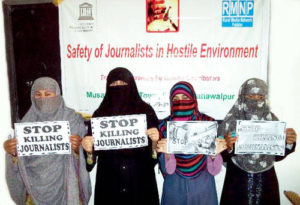 RMNP report further says that said journalism had never been an easy task in Pakistan, especially since the late 1970s, with the ascent of military dictator Zia-ul-Haq, under whom the state started to exert control over the media. Similarly, the present government, however, has caused the biggest blow to the media in Pakistan’s history, leaving thousands of journalists unemployed. Meanwhile, owners of the big media houses blame the government for the industry’s deplorable economic condition, partly relating it to a decline in state advertising. There is a sharp decline of up to 50 percent in federal and provincial governments’ advertising, while private sector advertisements have declined between 30 and 40 percent, forcing media owners to unwillingly lay off workers. Moreover, huge outstanding payments from the federal and provincial governments remain due, only aggravating the situation.Smaller publications are also facing multiple challenges for their survival. In Pakistan, the government is a major advertiser. Twenty five percent government advertisement quota was fixed for regional and smaller publications in 1983, but it had never been implemented in its true letter and spirit. Advertising agencies release government commercial advertisements to regional and smaller publications but non-APNS member publications are not being paid despite the passage of many years. Due to the sharp decline of government and private advertisements, local outlets have been forced to limit or suspend their operations. It is a fact that regional newspapers are the nursery of talent for the national press and have, over the years, nurtured journalists who became big names in the media space.The government advertisements are “vital” in keeping regional newspapers alive. “In fact, government advertising is their backbone and lifeline. Pakistan’s largest province Punjab government had introduced a new advertisement policy in August 2020 .It was alleged by the representatives of local and regional newspapers that the new policy indicates that some big media houses are hatching a conspiracy to eliminate local/regional media. In the presence of this discriminatory and unconstitutional advertisement policy, regional media cannot survive. Most of the regional newspapers will be shut down, in case this new advertisement policy was implemented. After the passage of five months, on the writ petitions filed by several local and regional newspapers publishers, Lahore High Court Multan and Bahawalpur Benches had suspended” Punjab Government New Advertisement Policy 2020″ in January 2021.Now all these writ petitions will be heard in Lahore High Court Lahore where Punjab government will submit its reply and final verdict will be announced.RMNP annual Press Freedom Report has expressed its grave concern on this prevailing situation confronted by regional newspapers and demanded of the Punjab Government to realise the importance of the regional press, which is fighting for survival. RMNP also urged Chief Minister Punjab to rescue the regional press by issuing the orders of the withdrawal of his government’s new advertisement policy and re-authorise Punjab government Public Relations Department to continue the releasing of local bodies institutions advertisements to regional newspapers as per its old routine.According to RMNP Annual Press Freedom Report 2020-2021, Covid-19 has taken the lives of at least twenty six Pakistani journalists and media practitioners so far and it also brought new challenges in terms of press freedom. As per RMNP monitoring two TV reporters Saeed Ali Achakzai and Abdul Mateen Achakzai were tortured for reporting at a quarantine centre near Afghan border. G-News Bureau Chief Arsalan Ahmed arrested in Peshawar as he covered lockdown violations exposing the KP government failure to control the spread of coronavirus. Fake cases were registered against working journalists in Khairpur and Kashmor districts of Sindh province. One Jang correspondent Azhar Ali Danish was badly beaten by a law-enforcing agency while covering women standing outside an Ehsas centre in Uchsharif town of Bahawalpur district. Female journalists who were reporting on Covid-19 were targeted on social media platforms.Pakistan Media Regulatory Authority (PEMRA) on June 25 introduced a set of restrictive directives for reporting and coverage of COVID-19 by TV Channels. Licenses of two independent TV Channels 24 and NEO were suspended by the Pakistan Electronic Media Regulatory Authority in 2020.PEMRA banned the coverage of absconders and Lahore Motorway Rape Case, while notices were issued to several TV channels for airing former Finance Minister Ishaq Dar’s interview, irresponsible coverage of terrorist attack on “Pakistan Stock Exchange in Karachi”,objectionable reporting that Kuwait Airways had grounded Pakistani pilots and engineers. Similarly PEMRA banned news anchor Kashif Abbasi of ARY TV channel for sixty days, TV channel 92 was fined PKR one million for airing defamatory content against Special Assistant to Prime Minister for Overseas Pakistanis Zulfi Bukhari and banned BOL TV show Champions and host Waqar Raza for airing objectionable content besides other actions against cable operators taken in 2020.During current year 2021,PEMRA suspended the licence of BOL TV and imposed PKR one million fine.It also served show cause notices to 14 TV channels for airing fake news regarding increase in the prices of petroleum products.PEMRA advised news TV channels not to air unsubstantiated remarks about the National Accountability Bureau(NAB).On April 16,2021 PEMRA banned the coverage of religious organisation” Tehreek-e-Labbaik Pakistan demonstrations on TV Channels and directed TV channels on April 28,2021 to rely on information from Information Minister and other ministers regarding decisions of the Pakistani cabinet meetings.Government introduced a new sets of rules a to regulate social media platforms like Facebook, Twitter, YouTube, and even TikTok which were approved by the Federal Cabinet in January 2020 under the Pakistan Telecommunication Act 1999 and PECA.Right groups have termed it as an attempt to control freedom of speech and expression, guaranteed under Article 19 of the Constitution of Pakistan. These rules were suspended in March 2020. The second version of rules – titled Removal and Blocking of Unlawful Online Content (Procedure, Oversight and Safeguards) Rules, 2020 – were released in November 2020 and almost immediately ran into opposition from civil society and social media companies, the latter under the banner of Asia Internet Coalition (AIC).The civil society argued that the rules infringed on freedom of expression and the tech firms’ contention was they weren’t properly consulted when those rules were being framed. The AIC members (Facebook, Twitter, and Google, among others) took their grievances directly to the PM by writing ominous letters. And the local civil society, which comprised, among others, a leading journalist body and a political party, challenged the rules in the Islamabad High Court. The Prime Minister has constituted a high-powered committee (on March 30, 2021) to resolve the impasse. The five-member committee, which will have its secretariat at the IT & Telecom Division, will be chaired by the Federal Minister for Human Rights, with Chairman PTA as its Secretary. The committee has been notified to submit a report to the Prime Minister within a month following consultations with all stakeholders. It remains to be seen how far the committee can go in resolving differences. It will be difficult to arrive at objective criteria to qualify what online content is “harmful” and what can pass off as benign. Social media has unfortunately become breeding ground for disinformation, fake news and harassment – the challenge is to ensure that innocent users are not targeted while curbing such malicious behavior. Then the process of reporting of content, investigation and adjudication also needs to be transparent.RMNP Press Freedom Report 2020-2021 demanded of the government for convening a meeting of all heads of the parliamentary parties in which all stakeholders be invited to formulate policy and legislation to ensure the protection of journalists and the implementation of articles 19 and 19 A, of the Constitution, 1973.It was stated in RMNP report that the government has circumvented articles 19 and 19A of the Constitution, 1973, by suppressing, imposing censorship, using PEMRA, issuing advices and intimidating by use of force the media in Pakistan.
RMNP report further says that said journalism had never been an easy task in Pakistan, especially since the late 1970s, with the ascent of military dictator Zia-ul-Haq, under whom the state started to exert control over the media. Similarly, the present government, however, has caused the biggest blow to the media in Pakistan’s history, leaving thousands of journalists unemployed. Meanwhile, owners of the big media houses blame the government for the industry’s deplorable economic condition, partly relating it to a decline in state advertising. There is a sharp decline of up to 50 percent in federal and provincial governments’ advertising, while private sector advertisements have declined between 30 and 40 percent, forcing media owners to unwillingly lay off workers. Moreover, huge outstanding payments from the federal and provincial governments remain due, only aggravating the situation.Smaller publications are also facing multiple challenges for their survival. In Pakistan, the government is a major advertiser. Twenty five percent government advertisement quota was fixed for regional and smaller publications in 1983, but it had never been implemented in its true letter and spirit. Advertising agencies release government commercial advertisements to regional and smaller publications but non-APNS member publications are not being paid despite the passage of many years. Due to the sharp decline of government and private advertisements, local outlets have been forced to limit or suspend their operations. It is a fact that regional newspapers are the nursery of talent for the national press and have, over the years, nurtured journalists who became big names in the media space.The government advertisements are “vital” in keeping regional newspapers alive. “In fact, government advertising is their backbone and lifeline. Pakistan’s largest province Punjab government had introduced a new advertisement policy in August 2020 .It was alleged by the representatives of local and regional newspapers that the new policy indicates that some big media houses are hatching a conspiracy to eliminate local/regional media. In the presence of this discriminatory and unconstitutional advertisement policy, regional media cannot survive. Most of the regional newspapers will be shut down, in case this new advertisement policy was implemented. After the passage of five months, on the writ petitions filed by several local and regional newspapers publishers, Lahore High Court Multan and Bahawalpur Benches had suspended” Punjab Government New Advertisement Policy 2020″ in January 2021.Now all these writ petitions will be heard in Lahore High Court Lahore where Punjab government will submit its reply and final verdict will be announced.RMNP annual Press Freedom Report has expressed its grave concern on this prevailing situation confronted by regional newspapers and demanded of the Punjab Government to realise the importance of the regional press, which is fighting for survival. RMNP also urged Chief Minister Punjab to rescue the regional press by issuing the orders of the withdrawal of his government’s new advertisement policy and re-authorise Punjab government Public Relations Department to continue the releasing of local bodies institutions advertisements to regional newspapers as per its old routine.According to RMNP Annual Press Freedom Report 2020-2021, Covid-19 has taken the lives of at least twenty six Pakistani journalists and media practitioners so far and it also brought new challenges in terms of press freedom. As per RMNP monitoring two TV reporters Saeed Ali Achakzai and Abdul Mateen Achakzai were tortured for reporting at a quarantine centre near Afghan border. G-News Bureau Chief Arsalan Ahmed arrested in Peshawar as he covered lockdown violations exposing the KP government failure to control the spread of coronavirus. Fake cases were registered against working journalists in Khairpur and Kashmor districts of Sindh province. One Jang correspondent Azhar Ali Danish was badly beaten by a law-enforcing agency while covering women standing outside an Ehsas centre in Uchsharif town of Bahawalpur district. Female journalists who were reporting on Covid-19 were targeted on social media platforms.Pakistan Media Regulatory Authority (PEMRA) on June 25 introduced a set of restrictive directives for reporting and coverage of COVID-19 by TV Channels. Licenses of two independent TV Channels 24 and NEO were suspended by the Pakistan Electronic Media Regulatory Authority in 2020.PEMRA banned the coverage of absconders and Lahore Motorway Rape Case, while notices were issued to several TV channels for airing former Finance Minister Ishaq Dar’s interview, irresponsible coverage of terrorist attack on “Pakistan Stock Exchange in Karachi”,objectionable reporting that Kuwait Airways had grounded Pakistani pilots and engineers. Similarly PEMRA banned news anchor Kashif Abbasi of ARY TV channel for sixty days, TV channel 92 was fined PKR one million for airing defamatory content against Special Assistant to Prime Minister for Overseas Pakistanis Zulfi Bukhari and banned BOL TV show Champions and host Waqar Raza for airing objectionable content besides other actions against cable operators taken in 2020.During current year 2021,PEMRA suspended the licence of BOL TV and imposed PKR one million fine.It also served show cause notices to 14 TV channels for airing fake news regarding increase in the prices of petroleum products.PEMRA advised news TV channels not to air unsubstantiated remarks about the National Accountability Bureau(NAB).On April 16,2021 PEMRA banned the coverage of religious organisation” Tehreek-e-Labbaik Pakistan demonstrations on TV Channels and directed TV channels on April 28,2021 to rely on information from Information Minister and other ministers regarding decisions of the Pakistani cabinet meetings.Government introduced a new sets of rules a to regulate social media platforms like Facebook, Twitter, YouTube, and even TikTok which were approved by the Federal Cabinet in January 2020 under the Pakistan Telecommunication Act 1999 and PECA.Right groups have termed it as an attempt to control freedom of speech and expression, guaranteed under Article 19 of the Constitution of Pakistan. These rules were suspended in March 2020. The second version of rules – titled Removal and Blocking of Unlawful Online Content (Procedure, Oversight and Safeguards) Rules, 2020 – were released in November 2020 and almost immediately ran into opposition from civil society and social media companies, the latter under the banner of Asia Internet Coalition (AIC).The civil society argued that the rules infringed on freedom of expression and the tech firms’ contention was they weren’t properly consulted when those rules were being framed. The AIC members (Facebook, Twitter, and Google, among others) took their grievances directly to the PM by writing ominous letters. And the local civil society, which comprised, among others, a leading journalist body and a political party, challenged the rules in the Islamabad High Court. The Prime Minister has constituted a high-powered committee (on March 30, 2021) to resolve the impasse. The five-member committee, which will have its secretariat at the IT & Telecom Division, will be chaired by the Federal Minister for Human Rights, with Chairman PTA as its Secretary. The committee has been notified to submit a report to the Prime Minister within a month following consultations with all stakeholders. It remains to be seen how far the committee can go in resolving differences. It will be difficult to arrive at objective criteria to qualify what online content is “harmful” and what can pass off as benign. Social media has unfortunately become breeding ground for disinformation, fake news and harassment – the challenge is to ensure that innocent users are not targeted while curbing such malicious behavior. Then the process of reporting of content, investigation and adjudication also needs to be transparent.RMNP Press Freedom Report 2020-2021 demanded of the government for convening a meeting of all heads of the parliamentary parties in which all stakeholders be invited to formulate policy and legislation to ensure the protection of journalists and the implementation of articles 19 and 19 A, of the Constitution, 1973.It was stated in RMNP report that the government has circumvented articles 19 and 19A of the Constitution, 1973, by suppressing, imposing censorship, using PEMRA, issuing advices and intimidating by use of force the media in Pakistan.
Five Pakistani journalists & media workers killed up to 30th April 2021
Ten Pakistani journalists including a female contributor lost their lives in 2020
Source: RMNP

